Logitech G502 Proteus Core Gaming Mouse Review
From design and software to performance, the Logitech Proteus Core is hands-down the best all-purpose gaming mouse on the market.
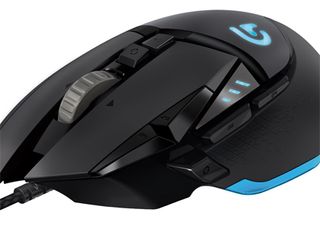
Update: Logitech has released the Proteus Spectrum, an updated version of the Proteus Core with full 16.8-million-color RGB backlighting. Aside from the illumination and a few blue highlights on the mouse itself, the Proteus Spectrum is exactly the same as its Core predecessor, right down to the G502 model number and the price.
I don't have a particular recommendation between the two, since they're nearly identical. For those who own other Logitech peripherals, though, it's worth noting that the Proteus Spectrum can sync with the company's RGB gaming products, such as the Orion Spark keyboard and the Atlas Spectrum headset.
It's great to see a company take a nearly perfect product and iron out its last remaining kinks. The Logitech G500s was a top-notch all-purpose gaming mouse, but its successor, the Logitech G502 Proteus Core, surpasses it in every way. In fact, we rate it so highly that we consider it the best gaming mouse overall.
Logitech G502
Design
The Proteus Core makes smart design choices at every possible opportunity, offering a comfortable experience for players who use a palm grip and an exceptional one for players who use a claw grip.
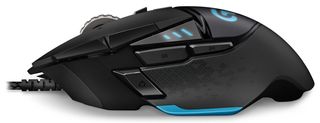
The mouse itself is rather small and low in profile. Both the small thumb rest and the grip for the two outermost fingers are textured, providing both stability and a pleasant tactile sensation.

With 11 programmable buttons, the Proteus Core is neither minimalist nor excessive. The peripheral has a left mouse button, a right mouse button, a scroll wheel that clicks in three directions, two dots-per-inch (DPI) sensitivity buttons near the top, one button below the scroll wheel and three thumb buttons. There is also a nonprogrammable button beneath the scroll wheel that adjusts the wheel's friction.
When Tom's Guide reviewed the G500s, one of our biggest complaints was that the scroll wheel felt loose and flimsy, even when we pressed the button to give it additional resistance. Logitech has addressed this concern on the Proteus Core. The free-scrolling mode is still available, but the scroll wheel becomes rock-solid upon pressing the button, with resistance to spare. Its ridged design is both comfortable and effective.
Sign up to get the BEST of Tom's Guide direct to your inbox.
Here at Tom’s Guide our expert editors are committed to bringing you the best news, reviews and guides to help you stay informed and ahead of the curve!
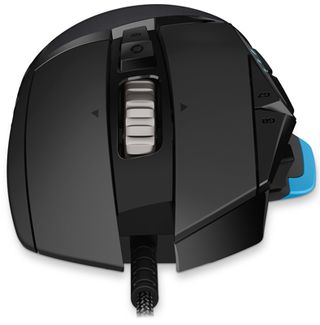
Otherwise, Logitech arranged the buttons on the Proteus Core in a very smart layout. The thumb buttons are large and distinctive, and the lowest one is ideally situated for a "sniper" button that lowers DPI — a useful feature in first-person shooters. The DPI buttons, located next to the left mouse button, are both remote enough to stay out of the way and large enough to press easily without looking.
Palm players with large hands may find the Proteus Core a bit small for their tastes. Otherwise, it's hard to see how Logitech could have devised a better all-purpose gaming mouse design.
Features
The Proteus Core runs on the same Logitech Gaming Software as all other modern Logitech mice. While this software lagged behind the comparable Razer Synapse software a few months ago, it has really come into its own in the interim.
The Proteus Core can store three profiles internally, or a virtually unlimited number of profiles on a computer. One of the best features of the Logitech software is its ability to scan your PC, determine which games you have installed and automatically create profiles for them.
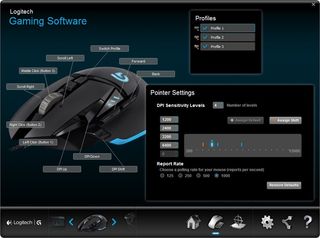
From there, customizing the profiles is simple. Simply click on a command (the profiles use game-specific commands, such as Grapnel Gun for "Batman: Arkham City" or Attack-Move for "StarCraft II") and drag it onto the desired button. The software will automatically apply the profile as soon as the game launches.
Users can also create macros, control the mouse's illumination and adjust the DPI range. The mouse ranges from 200 up to an unprecedented 12,000. Out of curiosity, we tried the 12,000 DPI, and found it far too sensitive to be of much use. Even so, the option to even go that high is something users won't find in any other gaming mouse.
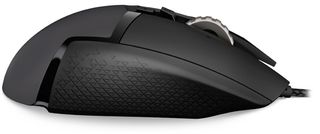
The Proteus Core boasts two other innovative features: a surface-testing capability and an adjustable weight system. By testing the surface you use for the Proteus Core, users can optimize anything from a high-end mouse pad to a sheet of paper. (We tried both, as well as a standard office desk, with impressive results.)
The G500s had adjustable weights, but the Proteus Core refines this feature. Rather than an ejectable canister as on the G500s, the Proteus Core has a magnetic door on its underside, hiding spots for five 3.6-gram weights. Gamers select not only how much weight to add, but where to add it. This provides very granular control over the feel of the mouse, as adding weight to the center of the mouse can feel very different from adding it to the back.
Performance
Thanks to the Proteus Core's large, sensibly spaced buttons, the mouse does a good job of controlling games from just about any genre. We tried it with "BioShock Infinite," "StarCraft II," "Batman: Arkham City" and "World of Warcraft," and found it equally suited to first-person shooter (FPS), real-time strategy, action/adventure and massively multiplayer online (MMO) games.
In each game, we found the Proteus Core to be responsive, accurate and precise. The extra buttons were helpful, but never overbearing. Assigning skills to the thumb buttons, such as crouching in "BioShock Infinite," selecting whole groups of soldiers in "StarCraft II" or grappling from point to point in "Batman: Arkham City" left our left hand free to focus almost entirely on movement.
MORE: Best Gaming Keyboards
The one genre to which the Proteus Core may not be suited at high levels of play is MMO. We found that the Proteus Core worked extremely well with "World of Warcraft," and assigning our most frequent skills to the thumb button was extremely convenient. That said, hardcore endgame players may find a dedicated MMO mouse with rows upon rows of buttons, such as the Logitech G600, suits their needs better.
The Proteus Core has no appreciable liftoff range and moderately good Z-axis tracking. Picking up the mouse and replacing it causes the cursor to move somewhat, but not enough to interrupt anything but the most demanding tournament-level play.
Verdict
Logitech took the already-excellent G500s and remedied its few flaws, leaving a product that's both more streamlined and more robust. If you have very specific needs — such as tournament-level FPS play or endgame MMO content — the Proteus Core may prove passable. For anyone else, it's hard to imagine a better generalist gaming mouse. Mouse manufacturers, take note: The Proteus Core is the standard to beat.
Specs
Laser Depth: 1.5 mm
DPI: 200 – 12,000
Size: 130 x 76 x 38 mm
Weight: 164 g (Adjustable)
Connection: Wired
Grip Type: Palm/Claw
- Best Gaming Desktops
- 15 Best PC Games Right Now
Marshall Honorof is a senior editor for Tom's Guide, overseeing the site's coverage of gaming hardware and software. He comes from a science writing background, having studied paleomammalogy, biological anthropology, and the history of science and technology. After hours, you can find him practicing taekwondo or doing deep dives on classic sci-fi.
